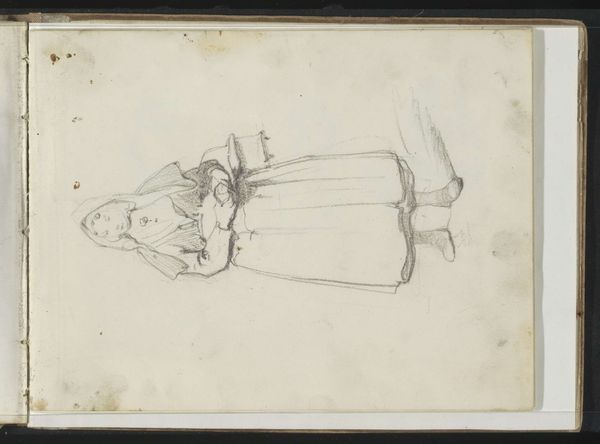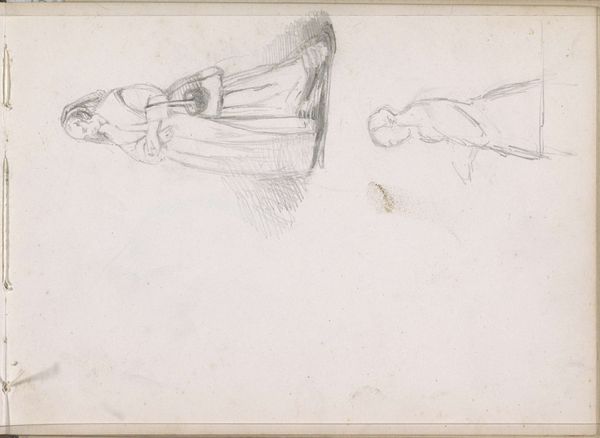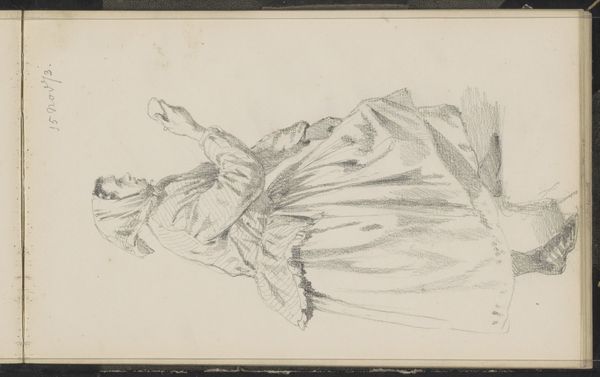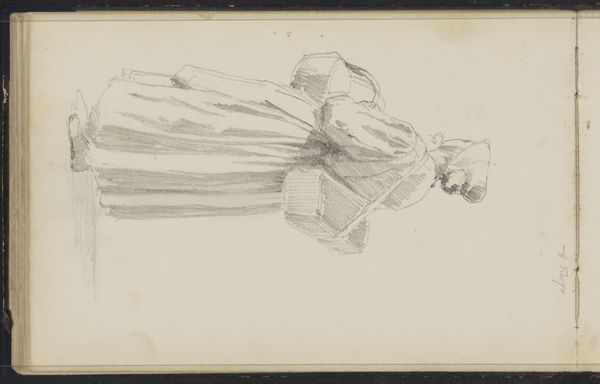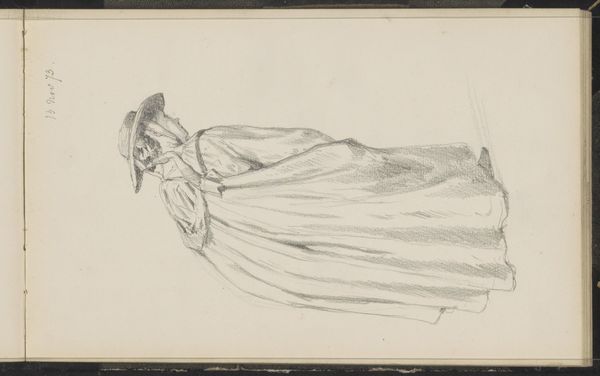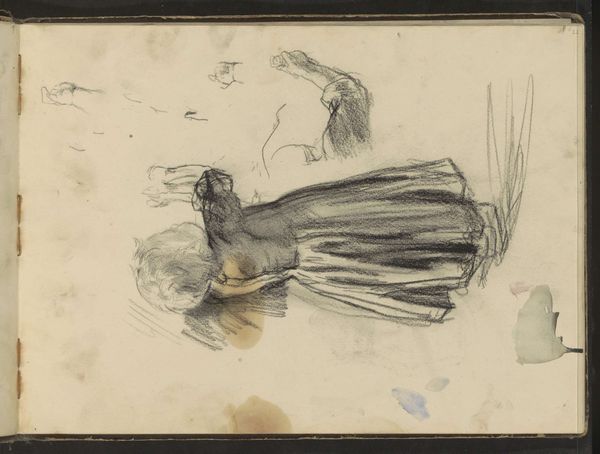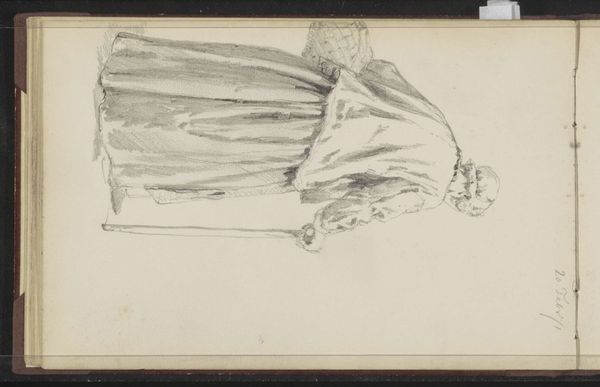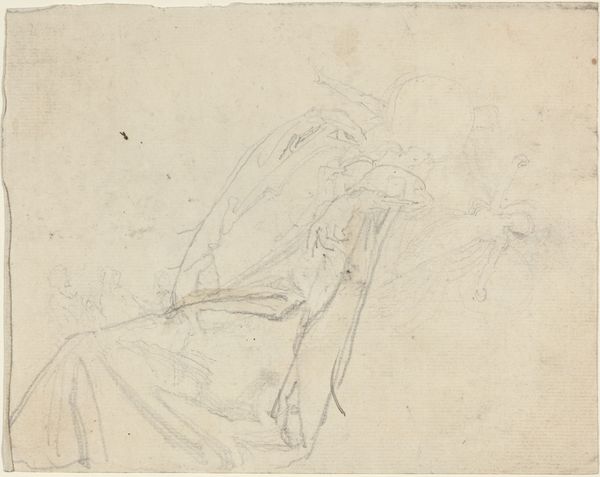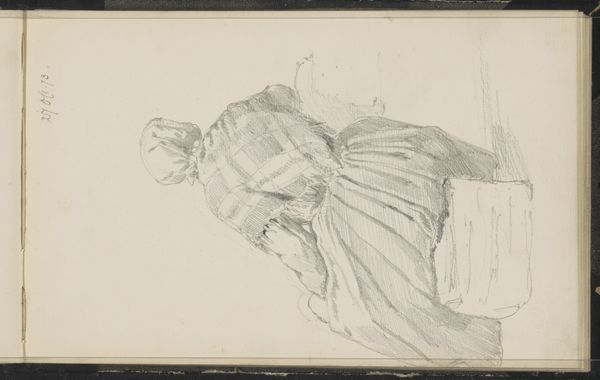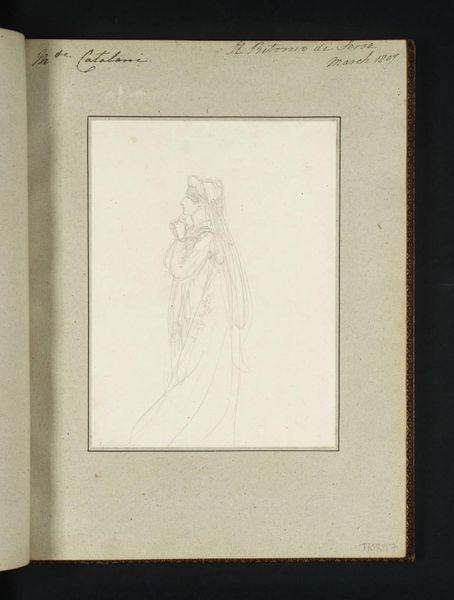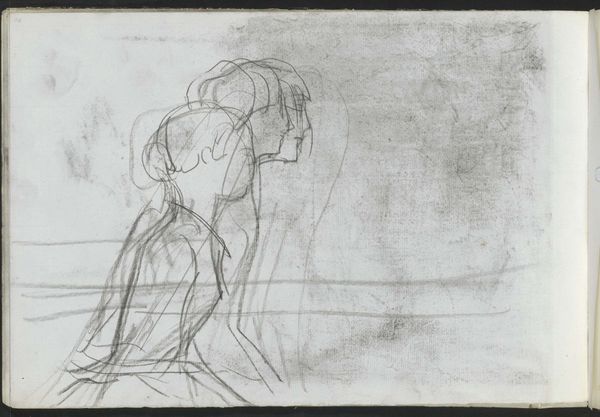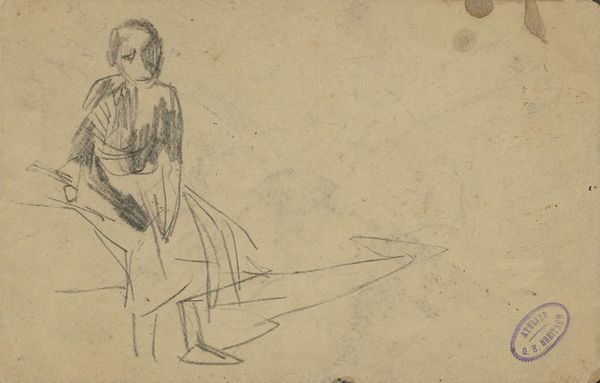
drawing, pencil
#
portrait
#
drawing
#
pencil sketch
#
figuration
#
pencil
#
realism
Copyright: Rijks Museum: Open Domain
Curator: Albert Neuhuys sketched this pencil drawing, "Peutermeisje, ten voeten uit," sometime between 1854 and 1914. It’s currently held here at the Rijksmuseum. What strikes you immediately? Editor: It’s stark, almost clinical. The minimal lines suggest vulnerability and simplicity, but there’s also a roughness that speaks to the process. I find myself focusing on the marks of the pencil, the hand that moved across the paper. Curator: Yes, it has that raw quality. For me, it’s a moment frozen in time, an intimate glimpse into childhood, the quietness and perhaps solitude of that stage. Editor: I’m curious about the specific pencil Neuhuys used and the kind of paper he chose. Was this drawing a preliminary study for a larger work? Was the paper mass produced? The choices made around materials significantly shape how we read the work, even something this seemingly straightforward. What labor went into it? Curator: I understand your perspective. But to me, the apparent lack of pretension is precisely what makes it so affecting. The visible pencil strokes communicate a direct connection with the subject matter. Editor: And who was that subject? Was this a commissioned piece portraying a member of a wealthy family, or someone within the artist's inner circle or community? If she was paid for this, how was her labor valued? How does she compare to images of the middle or upper class? It raises a whole host of socioeconomic considerations when thinking about this little girl’s life and that of the artist, and I don’t think they should be dismissed. Curator: Fair enough. Ultimately, I still circle back to that quiet tenderness. We all had such moments of being left to our own imagination; this reminds me of it. Editor: It’s undeniable the sketch evokes a sense of childlike innocence. However, interrogating the artwork through the prism of materials, production, and the societal conditions in which it emerged offers a richer, and arguably more conscientious, appreciation. Curator: An entirely valid way of framing the narrative. Thanks for revealing what lies beneath the surface, it's definitely made me think.
Comments
No comments
Be the first to comment and join the conversation on the ultimate creative platform.
